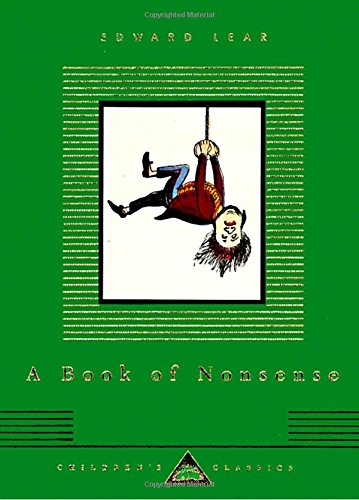This post contains affiliate links. As an Amazon Associate I earn from qualifying purchases
The owls, hen, larks, and their nests in his beard, are among the fey fauna and peculiar persons inhabiting the uniquely inspired nonsense rhymes and drawings of Lear (20th child of a London stockbroker), whose Book of Nonsense, first published in 1846, stands alone as the ultimate and most loved expression in English of freewheeling, benign, and unconstricted merriment.”He reads but he cannot speak Spanish, / He cannot abide ginger-beer; / Ere the days of his pilgrimage vanish, / How pleasant to know Mr. Lear!” writes the 19th-century English poet Edward Lear in “Self Portrait of the Laureate of Nonsense.” When The Book of Nonsense was first published in 1845, under Lear’s pseudonym, Derry Down Derry, it was a success–some say it turned the once stodgy, didactic world of children’s literature on its head.
This rollicking poetic romp begins with “A Book of Nonsense” (1846), a slew of more-odd-than-bawdy limericks about the Young Lady of Wales, the Old Man of Vienna, and many, many more, all accompanied by the spare, whimsical ink drawings done by Lear himself. Part two urges readers to leap into “Nonsense Songs, Stories, Botany and Alphabets” (1871), including the classic “The Owl and the Pussy-cat” and “The Jumblies” (who “went to sea in a Sieve”), along with equally rib-tickling but lesser known selections such as “The Nutcrackers and the Sugar-Tongs.” In this section, you’ll also discover instructions for how to make Crumbobblious Cutlets, a “Nonsense Botany” guide featuring the Bottlephorkia spoonifolia and the Manypeeplia upsidownia, and “Nonsense Alphabets,” strange little poems about quills, rattlesnakes, screws, and other words beginning with letters.
Part three merrily inflicts “More Nonsense Pictures, Rhymes, Botany, &c.” (1877) on readers with the well-known plant Washtubbia circularis and more wacky limericks such as “There was an old person of Bar, / Who passed all her life in a jar, / Which she painted pea-green, to appear more serene, / That placid old person of Bar.” As icing on a very strange cake, the last section offers “Laughable Lyrics, A Fourth Book of Nonsense Poems, Songs, Botany, Music, &c.” (1877), notably including “The Pobble Who Has No Toes.” Lear’s quirky sense of humor infuses every line of his ever skillful verse, which is often alliterative, and always very silly. Lear, the Laureate of Nonsense, frolics frivolously, and no one should ever go to sea in a Sieve without a copy of this book in tow. (All ages) –Karin Snelson
This post contains affiliate links. As an Amazon Associate I earn from qualifying purchases
